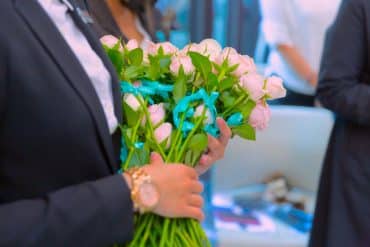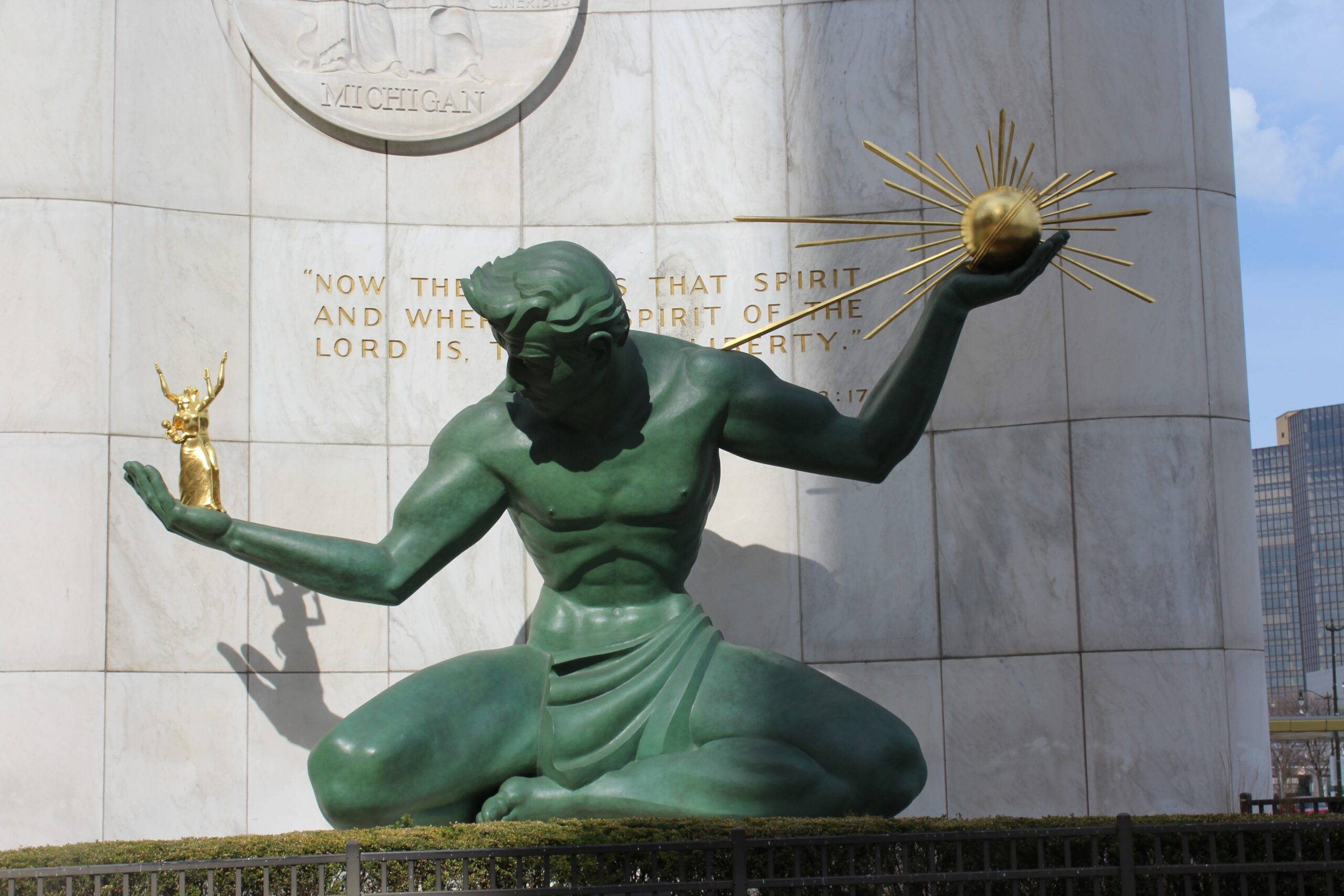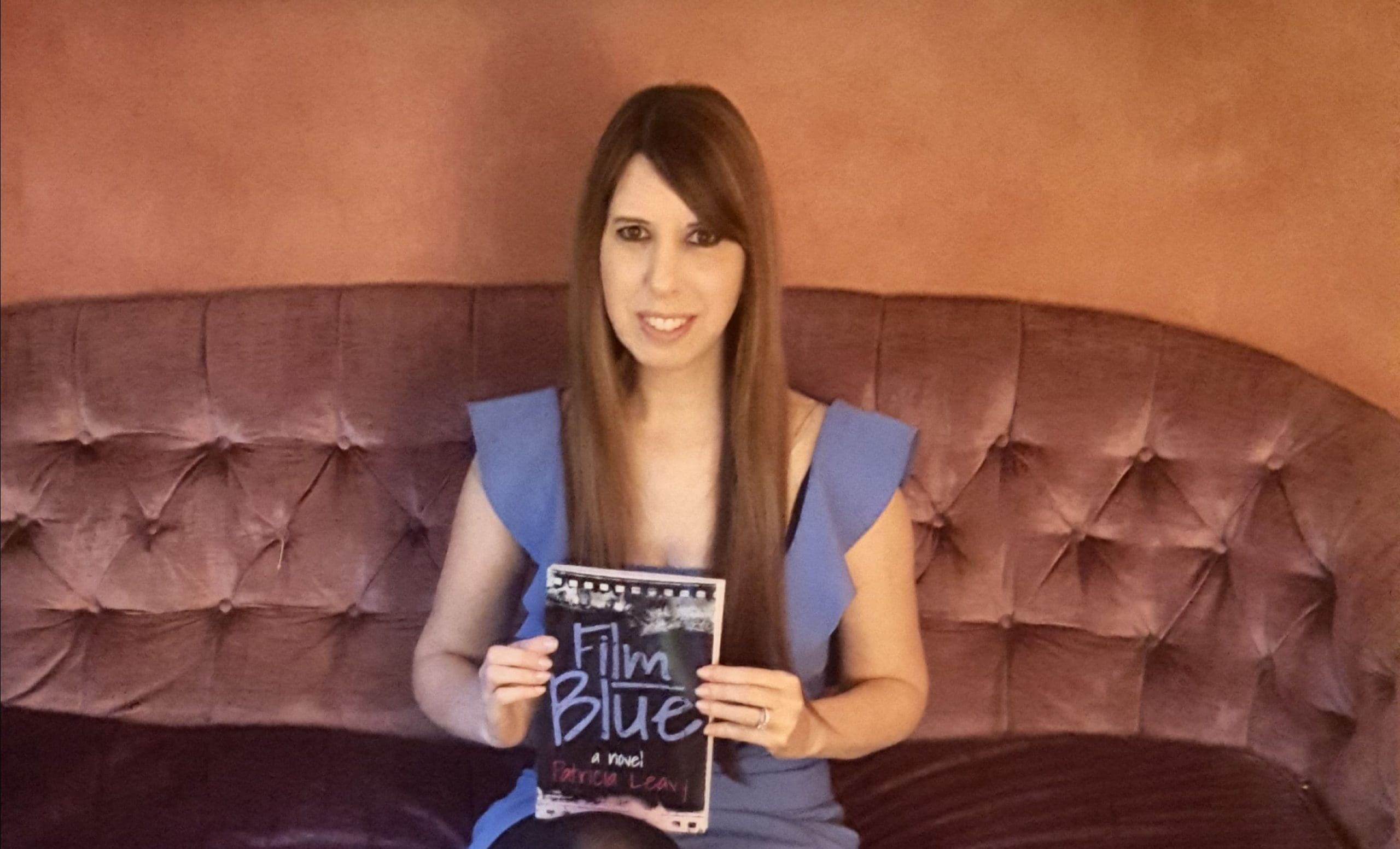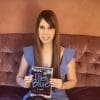Patricia Leavy Is the Social Fiction Doyenne
Alexandra Lasczik
The first time I heard the term ‘social fiction’, it was in reference to the work of a dear colleague of mine, Miroslav Pavle Manovski. I had the privilege of meeting Miroslav at the 2013 American Educational Research Association [AERA] Annual Meeting in San Francisco when he brought the house down as he performed an opera piece as his acceptance speech.
He had won the prestigious Arts-Based Educational Research (ABER) Outstanding Dissertation Award for the best Doctoral Dissertation that explores, is an exemplar of, and pushes the boundaries of arts-based educational research. It was my first AERA, and as a lone Australian at this enormous conference, I was thrilled that we’d really hit it off, and that I’d made such a firm friend. So a year later, when his book was published from his PhD work, I consumed it eagerly and learned it was part of the Social Fictions Series, published at the time by Sense, and edited by Patricia Leavy.
‘I remember how her work had spoken to me and affirmed my own arts-based approaches when I read Method Meets Art.
It piqued my interest, this notion of social fiction, and I thought it really must be something to have the stewardship of the amazing Patricia Leavy. I remember how her work had spoken to me and affirmed my own arts-based approaches when I read Method Meets Art. When I first read this seminal work, I had just secured my first academic appointment, at Southern Cross University after 25 years as a secondary art teacher. It was late 2011, and I have a vivid memory seared into my consciousness of lying back on my office couch and just inhaling this work in a day – eagerly and with no small measure of, well, excitement. I remember that I felt so seen, so affirmed. This stellar scholar was opening the door for me and many others. Giving us permission to keep going – that arts-based work was indeed rigorous, important, empirical.
My PhD, which I like to say was done for fun, so personal were my reasons, was also a work of arts-based scholarship. It was likely the first arts-based PhD in my country completed in the early weeks of 2003, but because it was unique, there was not much scholarship in my field upon which it could rest. My reading of the field was broad, as I was particularly inspired by the work of Elliot Eisner and Tom Barone – whose Touching Eternity lit me up.
‘My PhD…was also a work of arts-based scholarship.
They were touchstones for me, and the only sources I could find in the stacks at Fisher Library at The University of Sydney because this was pre-Google. I’d had no idea that courageous and confident pioneers like Rita L Irwin and Patricia were breaking the ground of arts-based scholarship in such inviting and inspiring ways on the other side of the world. It wasn’t until I read Method Meets Art 8 years after graduating that I had my academic career’s first ‘aha moment.’
And I’m not alone. Method Meets Art is in its 3rd edition.
So when I attended AERA in 2013, and properly found my tribe, and then read Miroslav’s work, I felt it was a homecoming. Fan Girling hard, I reached out to Patricia on Facebook with a friend request – and to my surprise, she accepted me. She’s been accepting me ever since. Like the time when she offered me my first book contract in 2014. Or the time we had our first official ‘meeting’ at a blowout salon in Chicago in 2015. I’ll never forget it. the blowout lasted for days; the memories, much longer.
Patricia Leavy is a genuine trailblazer, the real deal, an inspiration. By this, I mean in the literal meaning of the word – she inspires: breathes life into the field, into the work, into her colleagues. She lifts us all with her achievements, the ground-breaking work she has accomplished with publishing houses on her own and others’ behalf, and the ways she has smashed through stuffy, exclusionary academic traditions and gatekeepers benefit all of us who work in arts-based research.
‘Patricia Leavy is a genuine trailblazer, the real deal, an inspiration.
Leavy’s social fiction work has been the richest and the most fun to read. They have also been the most educative because the form of the work (fiction) is so enjoyable and pleasurable that the knowing sticks in ways that much of my non-fiction reading does not. Social fiction can be read through multiple lenses.
What is abundantly clear in reading Leavy’s social fiction is that she’s had fun writing them. The pleasure in the writing is palpably clear, translating strongly into the reading. It is super easy to forget that these novels are research works, because they are so engaging to read – and I say that as an arts-based researcher, so captivating they are. They provoke us to feel, to think, to be affected.
The protagonists are all women, and I dare to speculate that they are all aspects of Leavy’s own life, character, personality, intelligences and experiences – although she denies this.
In any case, the protagonists all come to know that they are each possibilities and deserving of love.
I know this because I have read Leavy’s entire social fictions catalogue. From Low-Fat Love, which I didn’t read until after I read American Circumstance. By the time I finished Low-Fat Love, I was hungry for more. I devoured Blue and Film and was delighted when the Candy Floss Collection was launched.
‘Leavy’s social fiction work has been the richest and the most fun to read.
Film is the final instalment in the trilogy that begins with Low-Fat Love and continues with Blue. These three novels operate as research artworks and a suite of connected, yet stand-alone stories. Like the other books, Film is a love letter to popular culture, and in particular, illustrates how art may sustain us through life’s challenges when those around us may not. This work has a strong sense of self, whilst simultaneously being a novel about how we must maintain our own sense of authentic self, remaining true to our creative identities, practices, and aspirations. In this way, Film is a staging of desire, possibility, and sensitivity. As always, Leavy offers a highly readable, enjoyable, and engaging public and (most importantly, in my view) accessible scholarship.
Her voice is palpable and inviting as she draws vivid, knowable, strong, and complex characters, to whom many can relate in their struggles for success and desire. Leavy’s refreshing and authentic dialogue and relatable plotting defy the complexity of the work and its subtexts about opportunity, creativity, and privilege, as well as feminism, equity, and sexuality. A proactive reader will note the theory in the work, and will hear the research at its core. Some will read for the absolute entertainment value. This is arts-based research at its best: accessible and refreshing to read, yet layered and nuanced in its textures of scholarship. Patricia Leavy delivered titles in her original and unique voice, yet again demonstrating her mettle as a masterful writer of fiction as research.
‘They have also been the most educative because the form of the work (fiction) is so enjoyable and pleasurable that the knowing sticks in ways that much of my non-fiction reading does not.
When Film Blue was out, it was thrilling for me to see these characters again and applauded Leavy for reclaiming her intellectual property and her publishing endeavour Paper Stars Press. I continued to read Leavy’s non-fiction, traditionally academic books, because they also give much. I adopted some of them for courses but always felt compelled to return to the fiction
Spark was a turning point in my reading of Leavy’s novels. It did something more for me. Leavy’s fictional practice was evolving, and this book hit a sweet spot. Spark is the story of an arts professor, invited to a luxurious, elite, think tank in Iceland to engage in transdisciplinary endeavours that seek to address a rather curious question. This one spoke to me through the captivating descriptions of a beautiful European country, explored by an academic charged with an inquiry that forces her into discomfort and wonder and to lean into the unexpected. It was very close to my own experiences but also tantalisingly different and escapist.
Leavy has spoken about her inspiration for Spark:her experience as a participant at a seminar on the neuroscience of creativity hosted by the Salzburg Global Seminar in Austria. To me, that sounded like a dream. I drank the descriptions of Iceland greedily, pausing only to Google the country and the places described. I tore through that book in a day, becoming impatient with the author because she was not writing fast enough to keep me captivated with more titles. Yet she also inspired me to pursue my own writing. I began another book and another, but I was still impatient. Come on, Patricia, I thought to myself, hurry up!
The protagonists are all women, and I dare to speculate that they are all aspects of Leavy’s own life, character, personality, intelligences and experiences – although she denies this.
And then Tess Lee happened. And then Jack.
Shooting Stars Above is the first in a series that seized me for more than a year. It is one of those novels that draws you into its heart and holds you there tightly, as you eagerly move through its contours to discover the fates of characters you care about deeply. Leavy managed to weave her magic through this story, touching on important themes and critical contemporary issues. At first blush, the book appears to be an enjoyable chick-lit romantic adventure, but this is where Leavy’s brilliance comes into play. This is actually a work of accomplished arts-based research, one which is deceptively accessible and deeply theoretical.
The proactive reader will note the theory in the story, yet will also have pleasure by its potent, aesthetically posed and convincing scenes, elegant and clean writing, and three-dimensional characters. I read it with gusto, called back to it again and again to sit with it and immerse myself in Tess’s world and wanted to know more about her life, motivations, and experiences. I found myself eagerly reading to the end, feeling disappointed again when I had finished – such is the power of Leavy’s writing. At the time, I thought that Shooting Stars Above was quite possibly Leavy’s best work to date, and I was again hungry for more.
In any case, the protagonists all come to know that they are each possibilities and deserving of love.
Once again, I eagerly sat down with Tess Lee and her interesting life: her beloved Jack, her friends, her politics, her literary career, her experiences, and her grace with the next novel, Twinkle of Doubt. I read this book with gusto, immersing myself in an appealing world of relationships, compassion, and creativity, in a kind of experiential healing. Tess and Jack, and their friends explore much-needed themes of kind-heartedness, integrity, courage, chosen family, and the power of the arts to heal, challenge, expand, educate, and connect. The latter is my favourite theme, and it emerged throughout this series in important, constant, and powerful gestures of advocacy and education. In these times of global disruption and instability, we need the arts more than ever.
Leavy well understands that the arts are transformative and important, and I found myself smiling during those moments in the text when I could hear her scholarly voice coming through powerfully and authoritatively. Leavy is well-versed in these terrains and is an absolute champion of the arts, being a veteran arts-based researcher. Twinkle of Doubt is a shining example of arts-based research. Leavy has always championed the arts in education, and she certainly does so with integrity in this series, through both the telling and the showing, in both the form and the content of this work.
Her voice is palpable and inviting as she draws vivid, knowable, strong, and complex characters, to whom many can relate in their struggles for success and desire.
Twinkle of Doubt is beautifully written, crisp, and deeply inviting to read. I wanted to stay with the words and with the beautifully drawn and fully formed characters long after I closed the book and was hopeful that there would be more to this series. They are so vivid on the page; it was as if I were in the room with them. I found myself reading late into the night, waking in the wee hours and picking up Twinkle of Doubt repeatedly.
I didn’t want to rush my reading either, reluctant to leave the characters, lingering with them for as long as possible. There are many powerful moments in Twinkle of Doubt, important ethical themes and actions. Leavy’s accomplished plotting means that events and stories emerge powerfully and convincingly throughout the book. Like her previous title, Shooting Stars Above, issues of trauma and pain are compellingly and sensitively managed with ethics and grace, written beautifully and offering a comforting and informative experience in the reading despite the unsettling nature of the subjects. There is so much beauty in Twinkle of Doubt that stayed with me long after I read the last page: the beauty of our good friends, of healing, of real and steady love, of life’s experiences wonderfully told. I was again impatient for the next book.
Leavy’s refreshing and authentic dialogue and relatable plotting defy the complexity of the work and its subtexts about opportunity, creativity, and privilege, as well as feminism, equity, and sexuality.
Constellations of Love is a book about connections, relationships, and the logic of finding patterns in the seemingly random. In this work by Leavy, we again reacquaint ourselves with the cast of characters in these stellar stories. Once more, I eagerly sat down to join Tess, Jack, and their coterie of fine friends and loved ones. I eagerly read Leavy’s tale of love and family, which teaches us the importance of leaning into the love of those who care for you the most. Tess’s sparkling literary career is topped only by her grace, deep emotional wisdom, kindness, and spectacular global reach.Tess’s stories are alive with light, emerging from the darkness of human experience; they tell of pain and bitter experience redeemed, humanity and grace.
An important lesson from Tess’s writing (and by extension, Leavy’s) is that the way we treat others is who we become, a lesson never more important than in these trying, turbulent, frightening, and divisive times. In the primary relationship of this series, that of Tess and her husband Jack, we learn the transformational power of love, of unconditional love. This is a relationship we all aspire to have: one of unreserved and steady devotion. Both Tess and Jack have experienced and survived deep, indescribable pain and loss in their lives. They have both had a life of seeking without realizing, existing without living—despite the critical and satisfying work they both do very successfully. Their love, as a consequence, is deep and unrelenting, and Leavy’s portrayal is sensitive and authentic; their relationship is beautifully drawn.
Twinkle of Doubt is … crisp, and deeply inviting to read.
Leavy employed symbolism and metaphor powerfully in this book, the notion of a constellation reflected in the strong web of ties between dear friends, cherished family, and beloveds. The pain Leavy writes about is, as she says herself, “laced with infinite hope.” The epilogue of this beautiful book brought me to tears, so poignant in its portrayal of an authentic marriage of mutual support, of its flaws and successes, of the trust in the one you love the most who can truly see you. The abject safety of that. This book’s themes, metaphors, and lessons are strongly present and beautifully drawn. The most significant in my reading is about leaning into the love of the people who love you most, whether they be your blood family or your chosen family. This theme resonates strongly, again and again throughout this book series, through the relatable experiences and encounters of the characters.
Once more, Leavy weaves her special magic as an accomplished scholar of arts-based research, and written a highly readable, beautifully accessible, wonderfully compelling work of fiction.
Supernova Hearts again demonstrates Leavy’s long-standing expertise in arts-based research and her talent as an engaging, creative, and important writer. As before, this book gripped me, and I was once more unable to put it down. The texture of Leavy’s writing is so inviting, the characters so beautifully and completely drawn that I always feel as if I am in the room with them. The themes and the narrative arcs in Supernova Hearts are important, ethical learning moments. Through pure aesthetic engagement and the reading experience, we are privy to the unconditional love of the central characters and the assemblage of their very fine friends. However, this book, like the others, is so much more than a fine example of chick lit.
‘I wanted to stay with the words and with the beautifully drawn and fully formed characters long after I closed the book and was hopeful that there would be more to this series.
The symbolism is potent, and the themes dark. There is deep trauma and its reverberating impacts—survival and healing, social justice, activism and advocacy. Wonderfully and generatively, all of these elements have the arts at their core, in all of the reconciliations and resolutions of the plot. This aspect is as powerful as it is beautiful. Having read all the books in this series to this point, I glean meaningful experiences and learnings from each. With Supernova Hearts, I have taken in the resilience of authentic love, how vulnerabilities can make us strong, and that we might take control of the only thing we can: our own decisions. This book is such a vital part of this lovely series.
This series examines tough and traumatic experiences and how the protagonists work through them. In her signature clean yet inviting style, Leavy explores trauma, darkness, and how you can move through disturbing life experiences and into the light with the support of loved ones, the healing potential of the arts, and the engagement of one’s personal creativity. North Star Bound is about conceptions of true north: the experiences and people that help us find our way and orient ourselves to our destiny. The central characters have ineffably connections and are concretely real in their relationship, which has had its share of challenges and sufferings. Their constellation of friends—the family they have chosen—demonstrate the nuances of solid relationships as the characters navigate the developments and pitfalls of their lives with good humour and honesty.
‘Once more, Leavy weaves her special magic as an accomplished scholar of arts-based research, and written a highly readable, beautifully accessible, wonderfully compelling work of fiction.
The characters are again beautifully rendered, palpably real. Once again, Leavy has created a highly accomplished work of arts-based research, cleverly disguised as chick-lit. This is Leavy’s particular brilliance; the writing is so deceptively seductive that you feel as though you are simply reading engaging entertainment, yet you are also reading a breathtaking work of deep scholarship. Leavy has managed an evocative, provocative tale once more, one that is deeply poetic and prosaic, at times challenging but always profoundly captivating. The book and, indeed, the series is a talented work of artistry that is empowering and important. I couldn’t put it down.
It is a spectacularly compelling, breathtaking series, including what may be the final title, Stardust Forever. These beautiful and influential books explore myriad themes, including relationships, kindheartedness, integrity, courage, chosen family, pain, vulnerability, and the power of the arts to heal, challenge, expand, educate, and connect. In her signature clean yet inviting style, Leavy explores trauma, darkness, and how you can move through disturbing life experiences and into the light with the support of loved ones, the healing potential of the arts, and the engagement of one’s personal creativity. It is so poignant that it many times brought me to tears. There is so much beauty in this series that stayed with me long after I read the last page: the beauty of our good friends, of healing, of real and steady love, of life’s experiences wonderfully told.
‘Once again, Leavy has created a highly accomplished work of arts-based research, cleverly disguised as chick-lit.
A central motif in these books is the love story between Tess (herself a successful writer) and her Jack (a federal agent). Whilst Tess and Jack appear to have a transcendent love, it is very much grounded in the gritty realities of contemporary life and their histories, some traumatic. Not to be sugar-coated, Tess and Jack’s love story endures sometimes harrowing events. Leavy skilfully creates a world where we walk with her characters through their dark times as she explores vengeance and violation, love, forgiveness, and healing. Indeed, the love stories in this series are multiple, with the core relationship supported by the love of friends, the love of art, and the deep satisfaction and restoration that can be found in creative practice.
Reading esteemed academic and novelist Leavy’s Tess Lee novels has been my pleasure and my privilege. I cannot wait to see what Patricia Leavy publishes next, and as always, I anticipate a relishing and restorative read.
Note from Patricia Leavy
Please note that this author read an earlier version of the novels that follow my character, Tess Lee. I faced significant challenges with the original publisher of some early titles in this series, and that imprint ultimately failed. Fortunately, I retained the rights to the books, including the right to re-release existing or new versions. I have extensively revised each novel and She Writes Press will release these new titles each spring, beginning in March 2025 with the release of Shooting Stars Above in a series titled The Celestial Bodies Romances. Please follow their website for updates or check my website or social media.
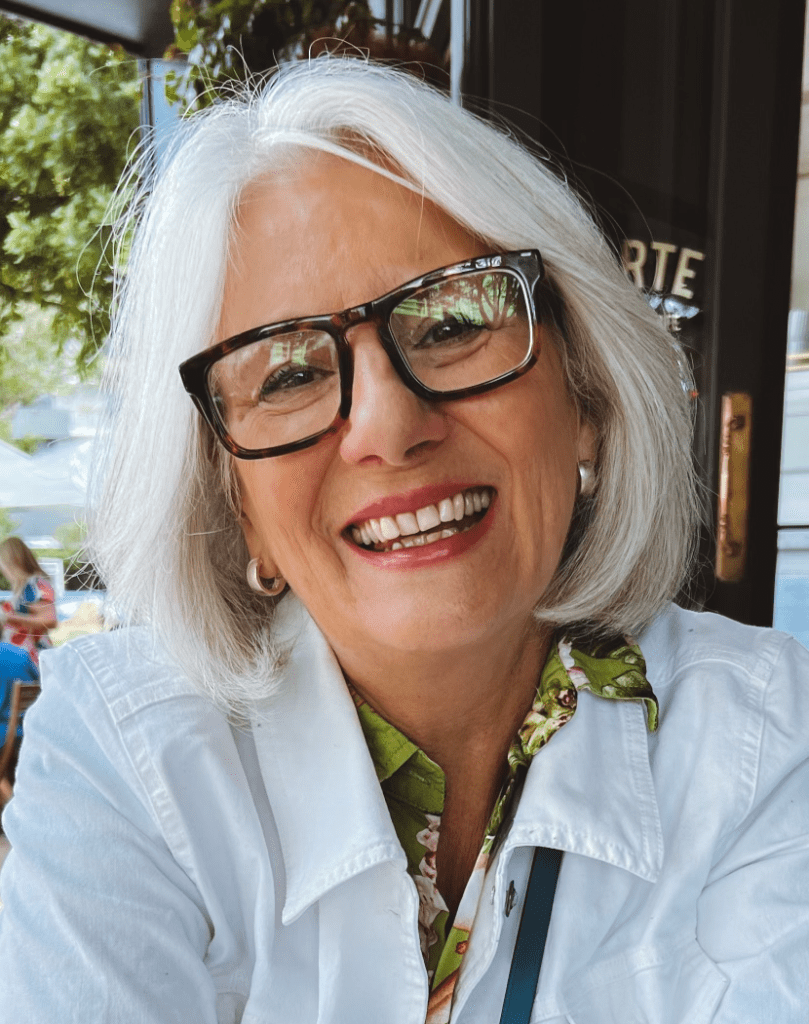
About the Author
Alexandra Lasczik is co-founder and Research co-Leader of the Sustainability, Environment and the Arts in Education Research Centre [SEAE] in the Faculty of Education at Southern Cross University, Australia. She is known as an arts-based scholar, particularly a/r/tography and critical writing inquiry. and she has served as World Councillor for the International Society of Education through Art [InSEA]; Chair, Arts-Based Educational Research Special Interest Group [ABER SIG] for the American Educational Research Association [AERA] and Program Chair, ABER SIG for AERA.
She was also Editor of Australian Art Education Journal and Editor of the International Journal of Education through Art [IJEtA] and she is Series co-Editorof Palgrave Studies in Movement Across Education, the Arts and the Social Sciences (Palgrave Macmillan), and was previously co-Editor of two book series, Studies in Arts-based Educational Research (Springer), and SpringerBriefs in Arts-based Educational Research (Springer). Her work focuses on children’s experiences of the Arts in schools and settings, particularly through transdisciplinary climate change education and the support of at-risk youth.
Credits
Images by Patricia Leavy
Learn More
New to autoethnography? Visit What Is Autoethnography? How Can I Learn More? to learn about autoethnographic writing and expressive arts. Interested in contributing? Then, view our editorial board’s What Do Editors Look for When Reviewing Evocative Autoethnographic Work?. Accordingly, check out our Submissions page. View Our Team in order to learn about our editorial board. Please see our Work with Us page to learn about volunteering at The AutoEthnographer. Visit Scholarships to learn about our annual student scholarship competition.



